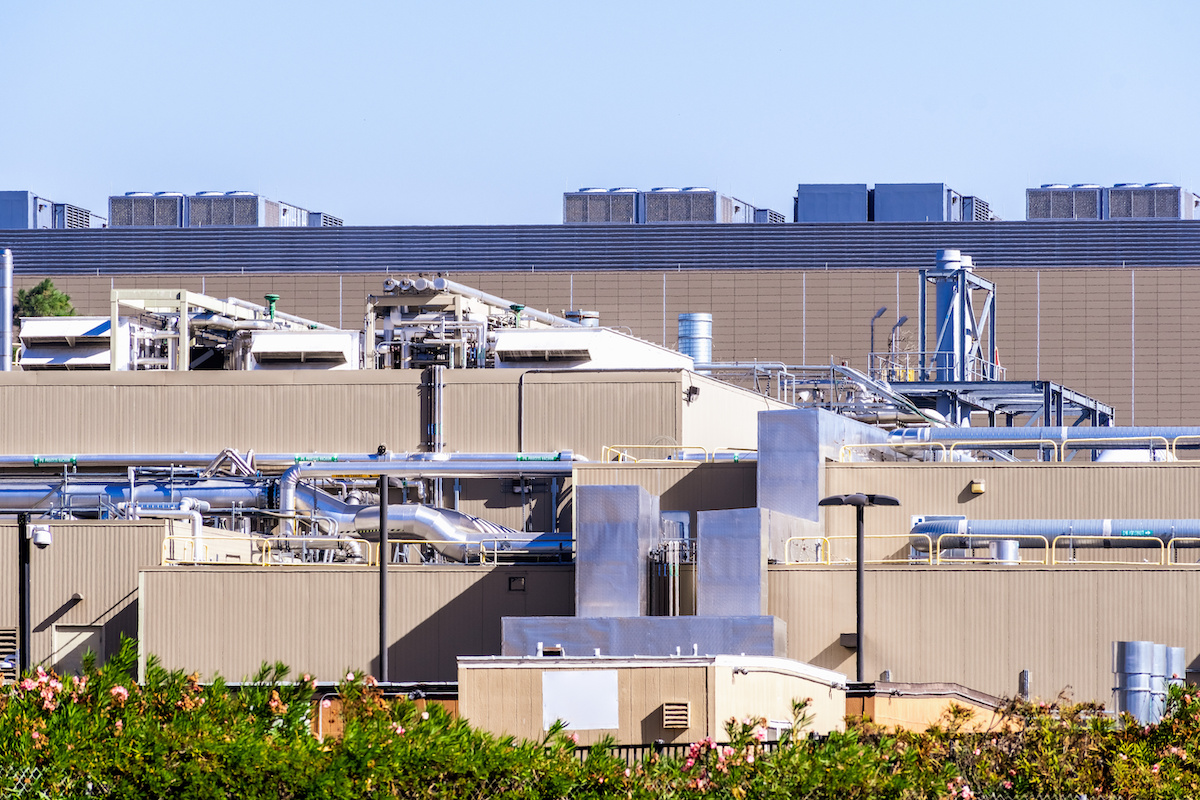What’s Driving the Boom in Data Center Construction?18 min read

2022 was known for a lot of things. The end of almost all COVID-related restrictions, the Russian invasion of Ukraine, a boom in housing prices, soaring inflation – and a massive build-out of new data centers. While the construction industry as a whole is growing at around 3.7% per year, data center construction is growing at 8%, according to Omdia Research.
About 25 million square feet of new data center capacity came online in 2022 with an average capacity of 132,000 square feet. Add that to more than a quarter of a billion square feet of data center capacity that already exists in the world.
The boom isn’t expected to slow in 2023 either. One construction firm manager commented that they had more than $10 billion in data center construction opportunities on the table for the next 18 months that have yet to be awarded.
Let’s take a look at some of the factors driving data center construction growth:
Hyperscalers and Colocation
Hyperscalers are in a race to cover more territories with more services offered at higher availability and lower latency. As well as competing among themselves, they also face fierce competition from colocation providers. Colos such as Digital Realty, Equinix, CyrusOne, Chindata, and Global Switch own 37% of current data center capacity, compared to 32% for cloud service providers and hyperscalers, 20% by privately owned data centers, and 11% by telcos.
The hyperscalers get the lion’s share of attention. Their data centers are massive, after all, and represent the state-of-the-art. Each new one averages more than 200,000 square feet. There is a definite trend among them to build bigger data centers. While 30 MW used to large, 80 MW to 100 MW projects are becoming commonplace.
The Azures, AWSs, and Google Clouds of the world accounted for 52% of the added capacity in 2022, compared to 42% for colos. Telcos made up the remaining 6%. In other words, businesses are not showing much interest in building their own data centers. Many prefer to outsource data center activities to the cloud or colos.
As a Service and Digital Transformation
Cloud services are booming. Software-as-a-Service (SaaS), Infrastructure-as-a-Service (IaaS), and Platform-as-a-Service (PaaS) offerings are all underpinned by data centers, whether run by hyperscalers, colos, or massive tech giants. Almost half of the new capacity brought online in 2021, for example, was by Microsoft, Amazon, IBM, Salesforce, and Google. As businesses deploy SaaS tools, they trigger demand for public cloud IaaS solutions from Google, AWS, Microsoft Azure, and others as well as uptick in demand for yet more colocation leases. When capacity is in short supply, more new data centers are planned. And the cycle repeats.
Digital transformation, too, is another driver of change and therefore, construction. Businesses want to get rid of aging systems and analog or manual processes, and they want to transition more towards a cloud model, whether it is public, private, or hybrid. These digitalization efforts are fueling yet more leases, building, and expansion.
Enterprise Data Centers
Yes, cloud and colos dominate. But that doesn’t mean all businesses will be getting out of the data center business. Many will continue to own their own, but they are far less likely to add new facilities. Instead, they will probably invest in upgrades or expand existing spaces to forward sustainability and digital transformation initiatives. This activity didn’t show up in new build capacity additions. But it was substantial. Omdia data reveals that privately owned data centers added 4.4 million square feet in the last six months of 2021.
Enterprise data centers tend to be smaller than those of hyperscalers and colos. They run at around 77,000 square feet on average. There is pent-up demand to modernize legacy data centers to introduce modern technology, make their technology footprint denser, and make their building infrastructure more efficient. Construction firms indicate that about 20% of current data center construction business is in retrofits.
Regional and Metro Hubs
Data center construction isn’t uniformly bullish everywhere. Some cities and regions are doing much better than others. North America and Asia & Oceania are the strongest markets. North America added 8.5 million square feet in 2021 and 10.7 million in 2022.
“Demand for capacity in North America more than tripled year-over-year in the first half of 2022 as companies continued to shift toward hybrid cloud environments in a post-pandemic world,” said Pat Lynch, Senior Managing Director of commercial real estate firm CBRE. “Although large hyperscalers remain the biggest users, the market has seen a resurgence in enterprise demand.”
Northern Virginia is the world’s largest data center market. It added 404 MW of capacity between July 2021 and July 2022. 830 MW more is under construction. Demand is sky-high with vacancy rates down to less than 2%. Beyond Virginia, high-growth areas include Phoenix, Salt Lake City, Atlanta, Dallas, and Chicago. These hubs have advantages such as being located near major business centers and being at low risk for weather events or natural disasters. Further factors that drive demand include the cost of operations, tax incentives, and proximity to network backbones.
The industry's first and only tool-less containment solution!
AisleLok® is the industry’s first modular containment solution,
proven to provide the core benefits of containment with greater flexibility and value.
The industry's first and only tool-less containment solution!
AisleLok® is the industry’s first modular containment solution,
proven to provide the core benefits of containment with greater flexibility and value.

Drew Robb
Writing and Editing Consultant and Contractor
0 Comments